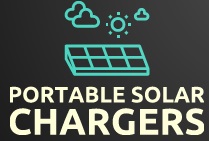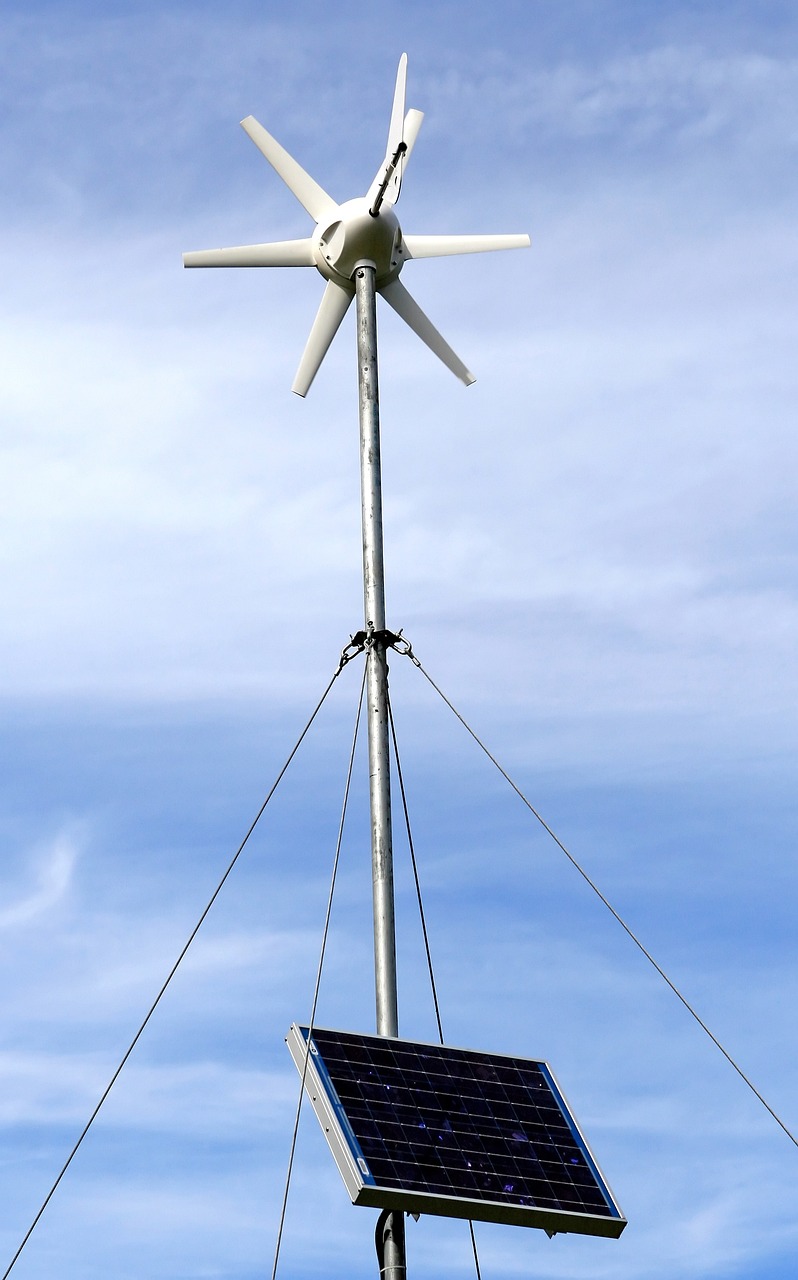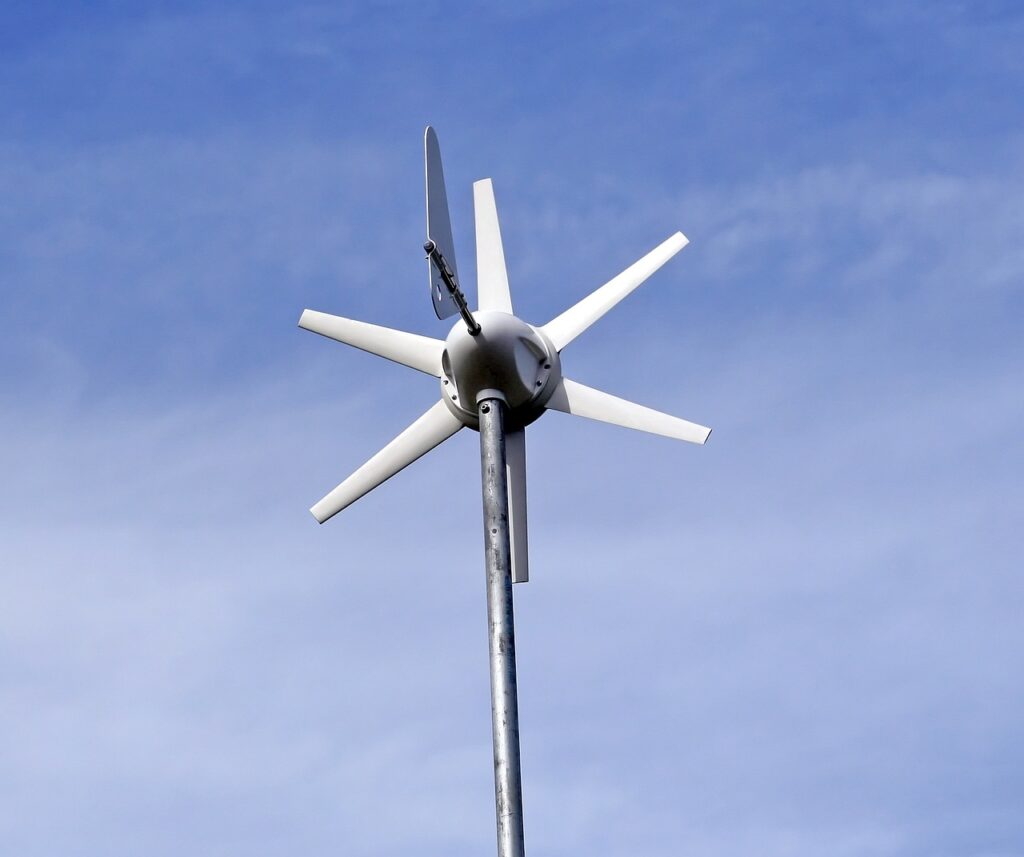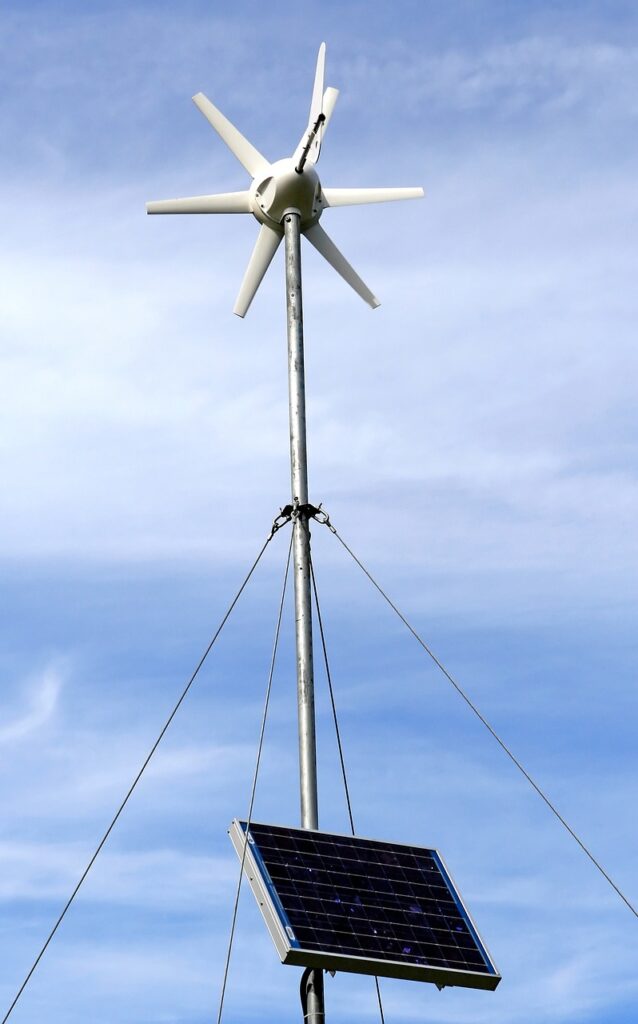Have you ever wondered how a portable solar charger works? In this article, we will explore the fascinating technology behind these handy devices. By harnessing the power of the sun, portable solar chargers are able to convert sunlight into electricity, allowing you to charge your devices on the go. We will dive into the key components and principles that make these chargers function, shedding light on the process and benefits of using them. So, get ready to uncover the secrets behind the portable solar charger and discover how this eco-friendly innovation can power your devices anytime, anywhere.
Solar Panels
Photovoltaic Effect
Solar panels are the heart of a portable solar charger. They work by harnessing the photovoltaic effect, which is the phenomenon of converting sunlight into electricity. The photovoltaic effect occurs when photons from the sunlight strike the solar panel’s surface, causing the electrons in the panel’s material to become excited and create an electric current. This current is then captured and utilized for charging various electronic devices.
Solar Cells
The solar cells are the building blocks of solar panels. They are made up of semiconductor materials, typically silicon, which have properties that allow them to convert sunlight into electricity. These solar cells are connected in series to create a solar panel. Each solar cell contains layers of material, including a negatively charged layer and a positively charged layer. When sunlight interacts with these layers, it creates an imbalance of electrons, generating an electric current.
Materials Used
Solar panels are built using various materials to achieve optimal efficiency and durability. The most commonly used material is crystalline silicon, which can be further categorized into monocrystalline and polycrystalline silicon. Monocrystalline panels are made from a single crystal structure and have a higher efficiency, while polycrystalline panels are made from multiple silicon fragments and have a slightly lower efficiency.
Additionally, thin-film solar panels use materials such as cadmium telluride (CdTe), copper indium gallium selenide (CIGS), or amorphous silicon (a-Si). These types of panels are flexible and lightweight, making them suitable for portable solar chargers.
Energy Conversion
Once the solar panels have absorbed sunlight and converted it into an electric current, the energy needs to be converted into a suitable form for charging devices. An inverter or charge controller is used for this purpose. The inverter or charge controller regulates the output voltage and current to match the requirements of the connected device. It ensures that the charging process is safe and efficient, preventing overcharging or damage to the device’s battery.
Solar Power Generation
Light Absorption
When a portable solar charger is exposed to sunlight, it absorbs the incident light through its solar panels. The solar panels are designed to maximize light absorption, allowing for optimal energy conversion. This is achieved through the use of anti-reflective coatings and textured surfaces that help trap and absorb more light. The absorbed light is then converted into electricity through the photovoltaic effect.
Electron Excitation
As the absorbed light reaches the solar cells, it interacts with the semiconductor material, typically silicon. This interaction causes the electrons within the material to become excited and gain energy. This excitation is a crucial step in the solar power generation process as it sets the stage for the subsequent movement of electrons.
Electron Flow
Once the electrons have gained energy from the absorbed light, they begin to move within the semiconductor material. This movement is facilitated by the presence of an electric field within the solar cells. The electric field directs the flow of electrons towards the conductive contacts of the solar cells.
DC Voltage Generation
As the excited electrons reach the conductive contacts of the solar cells, they create a flow of electrons or current. This flow of electrons results in the generation of direct current (DC) voltage. The DC voltage produced by the solar cells is then used to charge the battery of the portable solar charger or directly power the connected electronic devices.
Battery Storage
Energy Storage
To ensure uninterrupted power supply, especially when sunlight is not available, portable solar chargers often come equipped with built-in batteries for energy storage. These batteries store the excess solar energy generated during the day and release it when needed, such as during the night or in low-light conditions. This energy storage feature allows for charging devices even when sunlight is limited.
Charge Controller
The charge controller plays a crucial role in the battery storage system of a portable solar charger. It regulates the charging and discharging of the batteries to prevent overcharging, over-discharging, and other potential damage. The charge controller also optimizes the charging efficiency by adjusting the charging voltage and current to match the specific battery requirements.
Battery Types
Portable solar chargers use various types of batteries for energy storage, including lead-acid batteries, lithium-ion batteries, and nickel-metal hydride batteries. Each battery type has its advantages and limitations. Lead-acid batteries are cost-effective and widely used, but they are relatively heavy. Lithium-ion batteries offer higher energy density and longer lifespan, making them a popular choice. Nickel-metal hydride batteries are a more environmentally friendly option but have a lower energy density compared to lithium-ion batteries.
Battery Capacity
The battery capacity of a portable solar charger determines its ability to store and deliver electrical energy. It is measured in ampere-hours (Ah) or watt-hours (Wh). A higher battery capacity means more energy can be stored, allowing for longer periods of device charging. However, higher battery capacities also result in larger and heavier chargers, affecting portability.
Charging Process
Connecting the Charger
To begin charging your electronic device using a portable solar charger, you need to connect the device to the charger through the appropriate ports and connectors. Most portable solar chargers come with USB ports or other universal charging ports that support a wide range of devices. Simply plug your device’s charging cable into the corresponding port on the solar charger.
Ideal Charging Conditions
For optimal charging performance, it is essential to consider the ideal charging conditions. Portable solar chargers work best when exposed to direct sunlight with minimal obstructions or shading. Placing the solar charger in a position where it receives maximum sunlight will ensure efficient energy conversion and faster charging times. It is also important to ensure that the solar panels are clean and free from dust or debris that may affect their efficiency.
Charge Time
The charging time of a portable solar charger depends on various factors, including the solar panel’s efficiency, the capacity of the battery, the device being charged, and the available sunlight. Higher solar panel efficiency results in faster charging, while larger battery capacities allow for longer device charging. Sunlight intensity and duration also play a significant role in determining the charge time. It is important to be patient and allow sufficient time for the charger to accumulate enough solar energy for efficient charging.
Power Output
The power output of a portable solar charger determines how quickly it can charge a device. It is measured in watts (W) or milliamps (mA). Higher power outputs translate to faster charging times, provided the device being charged can handle the higher input power. Most portable solar chargers have varying power outputs to accommodate different devices’ charging requirements. It is important to check the power output compatibility to ensure efficient charging without risking damage to the device.
Solar Charger Components
Solar Panels
Solar panels are the primary component of a portable solar charger. They capture sunlight and convert it into electrical energy. The size, type, and efficiency of the solar panels determine the overall charging performance of the charger. Portable solar chargers may have one or multiple solar panels depending on their design and intended use.
Charge Controller
The charge controller regulates and optimizes the charging process of a portable solar charger. It manages the flow of electrical energy between the solar panels, batteries, and connected devices. The charge controller ensures safe charging by preventing overcharging, over-discharging, and short circuits. It also maximizes the charging efficiency by adjusting the voltage and current to match the specific requirements of the connected devices or batteries.
Battery
Many portable solar chargers come with built-in batteries for energy storage. The battery allows for charging devices even when sunlight is not available or limited. The capacity and type of the battery determine the charging duration and efficiency of the charger. In some models, the battery can be removable or replaceable, offering flexibility and extended usage.
Ports and Connectors
Portable solar chargers feature various ports and connectors to accommodate different device charging needs. USB ports are commonly found, allowing for charging smartphones, tablets, and other USB-powered devices. Some chargers may also have AC outlets, DC outlets, or other specialized ports for specific device compatibility. These ports and connectors provide the necessary interface for connecting the charger to the devices to be charged.
Charging Efficiency
Solar Panel Efficiency
Solar panel efficiency refers to the ability of the panels to convert sunlight into electrical energy. Higher-efficiency solar panels generate more electricity for a given amount of sunlight. Monocrystalline panels typically have higher efficiencies ranging from 15% to 25%, while polycrystalline panels have efficiencies of around 13% to 18%. Thin-film solar panels generally have lower efficiencies but offer other advantages like flexibility and lightweight.
Charge Controller Efficiency
The charge controller plays a crucial role in optimizing the charging efficiency of a portable solar charger. It ensures that the energy generated by the solar panels is efficiently stored in the batteries and safely delivered to the connected devices. Higher charge controller efficiency results in minimal energy loss during the charging process. Efficient charge controllers can achieve efficiencies of 90% and above.
Battery Efficiency
The efficiency of the battery used in a portable solar charger affects its overall charging efficiency. Battery efficiency refers to the amount of energy that can be stored and released by the battery without significant loss. Higher battery efficiency ensures that the stored energy is effectively utilized during device charging. Lithium-ion batteries are known for their high efficiency, typically exceeding 90%.
Overall Efficiency
The overall efficiency of a portable solar charger is a combination of the efficiencies of its different components, including the solar panels, charge controller, and battery. It represents the percentage of sunlight energy that is effectively converted into electrical energy and used for charging devices. Portable solar chargers with higher overall efficiency provide faster and more efficient charging, making them more reliable and convenient for users.
Using a Portable Solar Charger
Compatibility
Before using a portable solar charger, it is essential to check its compatibility with the devices you intend to charge. Ensure that the charger’s power output and the device’s charging requirements are compatible. Most portable solar chargers feature universal charging ports like USB, making them compatible with various smartphones, tablets, and other USB-powered devices. However, some devices may have specific charging requirements that may require additional adapters or specialized ports.
Sunlight Availability
The effectiveness of a portable solar charger depends on the availability of sunlight. To ensure optimal charging performance, use the charger when sunlight is abundant and direct. Avoid using the charger in shaded areas or during cloudy days, as this significantly reduces the charger’s charging efficiency. Plan your charging sessions accordingly, considering the time of day and the position of the sun for maximum sunlight exposure.
Positioning the Charger
Proper positioning of the portable solar charger is crucial for maximizing sunlight absorption and energy conversion. Place the charger in an area where it can receive direct sunlight without any obstructions, such as trees or buildings. Adjust the tilt and orientation of the solar panels to align them with the sun’s position for optimal sunlight capture. Regularly monitor and adjust the charger’s position throughout the day to ensure continued exposure to sunlight.
Maintenance
Like any electronic device, portable solar chargers require regular maintenance to ensure optimal performance and longevity. Keep the solar panels clean and free from dust, debris, or any obstructions that may hinder sunlight absorption. Use a soft cloth or brush to gently clean the panels and avoid using harsh chemicals or abrasive materials. Regularly inspect the charger’s ports and connectors for any signs of damage or corrosion. Proper maintenance practices will ensure the charger operates efficiently and lasts for an extended period.
Advantages of Portable Solar Chargers
Renewable Energy Source
One of the primary advantages of portable solar chargers is that they harness renewable energy from the sun. Unlike traditional energy sources like fossil fuels that are finite and contribute to environmental pollution, solar energy is abundant and clean. By using a portable solar charger, you are utilizing a sustainable energy source and reducing your carbon footprint.
Portability and Convenience
As the name suggests, portable solar chargers are designed for easy transportation and use on the go. They are lightweight, compact, and often foldable, making them ideal for outdoor activities, camping trips, or travel. With a portable solar charger, you can charge your devices anywhere, even in remote locations where traditional power sources may be unavailable.
Environmentally Friendly
Portable solar chargers contribute to a cleaner and greener environment. By relying on solar energy, they eliminate the need for fossil fuels and reduce greenhouse gas emissions. Using a portable solar charger helps promote sustainability and supports the transition towards a more eco-friendly future.
Cost Savings
Investing in a portable solar charger can lead to long-term cost savings. By utilizing free solar energy, you can reduce your reliance on grid electricity and consequently reduce your utility bills. While the initial cost of purchasing a portable solar charger may be higher, the savings in energy costs over time can offset this investment. Additionally, portable solar chargers often have a long lifespan, providing value and savings for years to come.
Limitations of Portable Solar Chargers
Weather Dependence
The efficiency of portable solar chargers heavily relies on sunlight availability, which can be affected by weather conditions. Cloudy or rainy days significantly reduce the amount of sunlight reaching the solar panels, resulting in slower charging speeds. Moreover, operating in extreme temperature conditions may impact the overall performance and efficiency of the charger. It is important to consider the weather conditions and adjust expectations accordingly when relying on a portable solar charger.
Limited Power Output
Portable solar chargers, by design, have limited power output compared to traditional power sources. They provide enough power to charge small electronic devices like smartphones, tablets, or portable speakers. However, charging larger devices with high power requirements, such as laptops or cameras, may not be feasible with portable solar chargers alone. It is crucial to assess the power needs of your devices and the capacity of the charger before use.
Charge Time
The charging time of a portable solar charger can be longer compared to traditional wall chargers or power banks. It depends on various factors, including the charger’s solar panel efficiency, battery capacity, and sunlight availability. Especially in low-light conditions or during shorter daylight hours, charging times may be significantly extended. It is important to plan your charging sessions accordingly and allow sufficient time for the charger to accumulate enough solar energy.
Shadow or Obstruction Effects
Obstructions such as trees, buildings, or other objects can cast shadows on the solar panels of a portable solar charger. Shadows significantly reduce the charger’s energy conversion efficiency, as the shaded areas receive less sunlight. It is crucial to position the charger in an unobstructed area to maximize the sunlight exposure. Monitor the surroundings and adjust the charger’s position as needed to avoid shadow effects.
Applications and Use Cases
Camping and Outdoor Activities
Portable solar chargers are highly suitable for camping and other outdoor activities. They provide a reliable and sustainable source of power to keep essential devices charged, such as smartphones, GPS devices, or camping lights. With a portable solar charger, you can stay connected, capture memories, and ensure safety during your outdoor adventures without relying on traditional power sources.
Emergency or Disaster Situations
In emergency or disaster situations where power supply may be disrupted, a portable solar charger becomes an essential tool. It allows you to maintain communication, access emergency services, and power essential devices like radios or flashlights. Portable solar chargers provide a reliable backup power source that can be crucial in such situations.
Traveling and Backpacking
Whether you are backpacking through remote areas or traveling to foreign destinations, a portable solar charger can be your reliable companion. It ensures that your devices remain charged, enabling you to navigate, capture photos, or stay connected throughout your journey. The portability and convenience of a solar charger make it an ideal travel accessory for those who value sustainability and independence.
Charging Small Electronic Devices
The primary use case for portable solar chargers is to charge small electronic devices like smartphones, tablets, e-readers, or portable speakers. These devices are an integral part of our daily lives, and with a portable solar charger, you can ensure they stay charged even when traditional power sources are not readily available. Whether you are hiking, attending outdoor events, or simply enjoying time in nature, a portable solar charger allows you to stay connected and powered up.
In conclusion, portable solar chargers offer a convenient and sustainable solution for charging electronic devices on the go. By harnessing the power of sunlight, these chargers provide a renewable energy source that reduces dependence on traditional grid electricity and fossil fuels. With their lightweight and portable design, they are ideal for camping, traveling, emergencies, and other outdoor activities. While they may have limitations such as weather dependence and limited power output, their advantages in terms of cost savings, environmental friendliness, and convenience make them a valuable addition to our modern lives. So the next time you embark on an adventure or find yourself in need of a reliable and eco-friendly charging solution, consider taking along a portable solar charger. With the sun as your power source, you can stay connected wherever you go.




